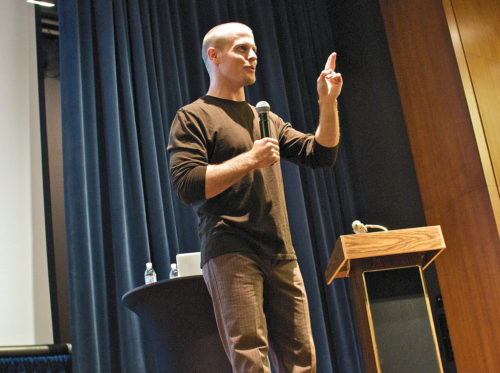Learning new skills can be a very daunting task. According to Kendra Cherry, “Learning is often defined as a relatively lasting change in behavior that is the result of experience.” Consider formal education, which can take more than a decade to complete. However, acquiring skills are essential, whether it be learning new languages, developing your public speaking prowess, or learning how to be attuned to others’ emotions. Learning can be considered a skill itself, and investing some of your resources in learning how to learn can pay off tremendously in the future.

Tim Ferriss is a well-known personality who has made a career out of finding out what makes successful people tick. He is the author of books such as The 4-Hour Chef and Tools of Titans, where he distills the best advice given by elite businessmen, top celebrities, and peak performers.
One of the most known frameworks attributed to him is the DiSSS system, which he claims can help anyone reach the top five percent in any field in less than 12 weeks. While results may not be as spectacular in reality, the framework is still a handy guide for people who want to accelerate the learning process. In a nutshell, DiSSS stands for the four stages of approaching learning: deconstruction, selection, sequencing, and stakes.
Deconstruction
Being overwhelmed can easily lead to discouragement and eventual failure. As any person tasked with handling a major project could attest to, most of the resistance to action occurs at the very beginning, when the sheer size of the tasks at hand can be overwhelming. Deconstruction aims to bypass this problem by reducing any obligations to the minimum requirements.
Deconstruction can be done by reducing the learning content into bite-sized pieces or working backward from the final product to determine the basic building blocks. Psychologist Gerald Matthews Ph.D. shares that, “A good metaphor for personality is the mosaic; you have to stand back to see the pattern in all the little pieces of tile.” You can also interview experts to know the core essentials or use translation to bridge gaps between current knowledge and an unknown skill.

Selection
Even after deconstructing content into small pieces, there might still be too much to digest properly. In this case, selection can be used to remove data that are not essential to acquiring the skill. It is an application of the Pareto principle, which states that only 20 percent of anything is required to bring about 80 percent of the results. By reducing the amount of content to assimilate, it becomes easier to process all the information while still gaining a decent amount of skill.
Sequencing
The order of the content also matters as some sub-skills might build on other sub-skills. Attempting to learn sub-skills without mastering its prerequisites can delay your progress. Hence, it is important to learn how to sequence your learning such that anything you learn properly builds on your previous knowledge.
Stakes
Having a fundamental reason for learning a skill, such as a career development or fulfilling a sense of purpose, can be a powerful motivator. However, there will still be times when it feels easier to quit simply. A solution is to set high stakes by incorporating rewards and punishment into your learning program.
For example, share your progress with other people; if you fail, you risk embarrassment, while success will improve your reputation and maybe even your popularity. Setting stakes helps you gain the willpower to stick with your learning plans, through thick and thin. “Achievement of all of the learning objectives should result in accomplishing all of the overall training goals of the training and development experience(s),” adds Carter McNamara, MBA, PhD, Authenticity Consulting, LLC.

There you have it! We hope this short list can help you learn more efficiently and be a better adult in the workplace.